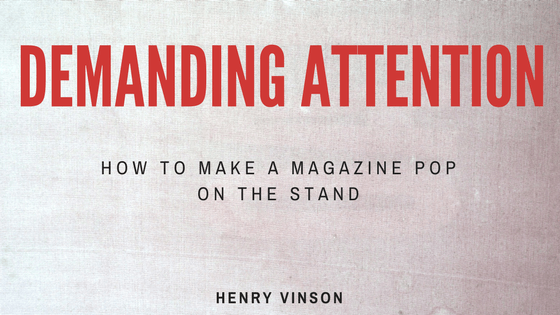Magazines are ever-present and eye-catching; they beg for attention in supermarket aisles, peek out from piles of mail, and demand attention in otherwise unexciting waiting rooms. Their striking covers and conspicuous headlines demand our notice; the best compositions can draw a reader’s hand and eyes to the cover, then the front page, and then through the remaining pages.
But that reader traffic is contingent on a magazine’s ability to snag the reader at first glance, and to pique enough interest to inspire a closer look. Needless to say, this makes designing layout a high priority; even the most engaging content can flop when presented in a droll, obnoxious, or confusing way. This essential need to engage readers makes magazine development a marketing-based venture at its core, and as such requires designers to think creatively about how to attract a targeted audience.
Aspiring brand developers should approach layout however they think best, given their audience and goals; however, there are a few best practices to follow when formulating a design.
DO:
Prioritize the Cover.
Readers don’t pick up a magazine because they have a sneaking suspicion that an article tucked below the fold on page five is well-written and engaging. In fact, without an eye-catching cover, readers probably won’t even give the magazine a cursory glance.
While the publication as a whole requires careful creative thought, particular attention needs to be given to the cover. Experiment with striking color juxtapositions and eye-catching typography; incorporate engaging headlines and impactful photographs or illustrations. Effective covers attract readers – so make it pop!
Consider your audience.
A magazine that offers recipes and DIY house tips to stay-at-home parents probably won’t have the stark and intensely monochromatic cover characteristic of extreme sports magazines. Consider your audience! Format your publication in a way that suits the tone of your content by considering which color palettes, typefaces, and photographs will draw in your target readers.
Use graphics, illustrations, and photographs strategically.
Sometimes, a picture really is worth a thousand words – or none at all, if it’s thoughtlessly slapped on the page. Photographs and illustrations must be used strategically, on and off the cover. Interior spreads can be made breathtaking by a full-page illustration, and graphics can facilitate easy understanding and break up otherwise text-heavy articles into digestible chunks.
DON’T:
Apply color everywhere.
The worst mistake a beginning designer can make is to assume that more color will attract more attention. In all likelihood, it will – but not in a good way. A haphazardly colored spread looks messy at best and garish at worst. Applying an obnoxious color design is the quickest way to shoo a potential reader, so think carefully before adding a tenth color to your palette! Find a design theme and stick to it. Sometimes, the most minimal styles are the most striking.
Fear white space.
It can be tempting to stuff a page full of words. After all, magazines are literary publications and traffic in text by definition. However, an attempt to cram too much text on a single page or section can lead to a painfully cluttered and difficult-to-parse spread. Save your reader’s eyes and attentions; let the page breathe by letting the white space filter in.
Design in single pages.
Magazines are organized in two-page spreads, and must be designed as such. Designing standalone pages will ultimately lead to a jumbled, jarring, and aesthetically uncomfortable reading experience. A would-be designer needs to consider a magazine as a cohesive product, rather than a collection of related articles.
Ultimately, magazines are literary creations. However, when half of a publisher’s struggle is based in attempting to snag and maintain a reader’s attention, considerable care and attention must be poured into the project’s design. That two-second glance at a nearby cover might not seem like much to the passerby in the grocery store, but that heartbeat moment of evaluation means everything to a designer.

